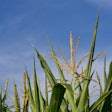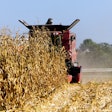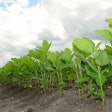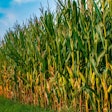
The latest report from the U.S. Drought Monitor, by the National Drought Mitigation Center at the University of Nebraska-Lincoln, the United States Department of Agriculture, and the National Oceanic and Atmospheric Administration, reveals a continued dry pattern across much of the country, presenting significant challenges for American agriculture. While some areas, particularly in the Pacific Northwest, received over 2 inches of rain, the majority of the United States is experiencing drought conditions that could impact crop yields and livestock production.
As of late October, nearly all regions of the Lower 48 states are warmer than normal, with temperatures 10-12 degrees above average in the Southern Plains and South. This persistent warmth, coupled with limited precipitation, has resulted in record dryness in many locations, echoing conditions not seen since December 2022.
Northeast
In the Northeast, temperatures remained near or slightly above normal, with minimal precipitation. The expansion of abnormally dry conditions has now affected southern New York, northern New Jersey, and eastern Pennsylvania, where moderate drought conditions have emerged. Farmers in these areas may struggle with water shortages, impacting both crop irrigation and livestock watering.
Southeast
The Southeast has seen only isolated and light rain, leading to widespread dryness and the potential for flash drought development. Temperatures are 2-6 degrees above normal, compounding the stress on crops. Moderate drought has expanded in South Carolina, Alabama, and Florida, raising concerns for farmers relying on consistent moisture for their crops.
South
The South has experienced some of the most severe drought conditions. North Texas and eastern Oklahoma reported temperatures 12-16 degrees above normal, exacerbating existing drought impacts. Oklahoma and Texas saw severe and extreme drought conditions expand, with many areas now classified under severe drought. This is particularly concerning for producers in the cattle and forage sectors, as pasture conditions deteriorate and feed prices may rise due to reduced availability.
Midwest
The Midwest is facing significant agricultural challenges as well, with only light rains failing to alleviate drought conditions. Severe drought has expanded into parts of northwest Ohio, northern Indiana, and northern Illinois. This lack of moisture could jeopardize late-season crop harvests, particularly for corn and soybeans, which require adequate soil moisture for optimal yields.
High Plains
In the High Plains, drought conditions are intensifying, with severe and extreme drought expanding over much of western and southern South Dakota, Nebraska, and Kansas. Farmers in these areas face critical water shortages that threaten their ability to sustain crops and livestock through the fall and winter months.
West
Contrastingly, the West has seen some improvement due to substantial rainfall in certain areas, particularly along the Pacific Coast and in the Rocky Mountains. However, even with this rainfall, drought conditions persist in northern Colorado and parts of Wyoming. The agricultural sector in these regions must balance recent precipitation against the backdrop of extended dry spells earlier in the year.
Looking Ahead
The forecast for the next 5-7 days suggests a potential shift in weather patterns, with widespread precipitation expected across the Plains, Midwest, and parts of the South. This could provide much-needed relief for drought-stricken areas, but farmers remain cautious as previous dry spells have led to rapid evaporation and continued soil moisture depletion.
As the agricultural community braces for the upcoming winter season, ongoing monitoring of drought conditions will be crucial. Farmers and producers are encouraged to prepare for the possibility of continued dryness and to adapt their strategies to mitigate the impacts on crop and livestock production.
















